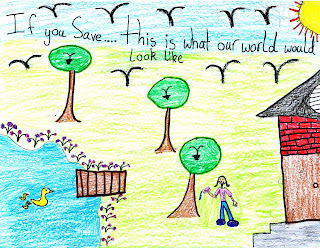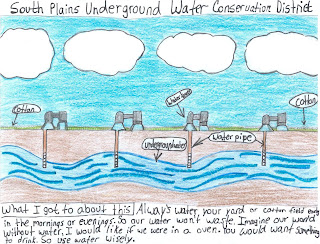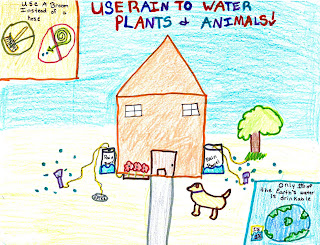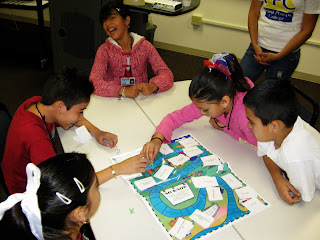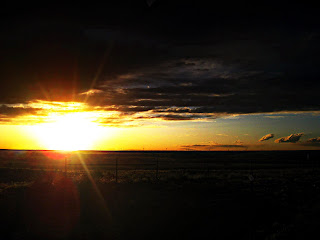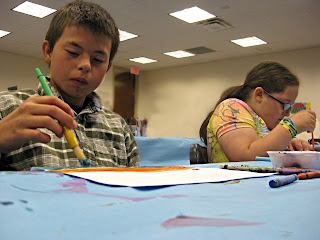Local Pioneer: Free Rain, Free Watering and Exercise All in One
by Doug Pushard
Always looking to do more with less? Like help the environment and getting exercise at the same time? Well Larry Gilg did, and he found a way: "I hooked a water pump to a bicycle trainer and use it to pump water out of my rainwater system." Watering his yard, totally for FREE and getting exercise at the same time.
Read on for an interview with innovator Larry Gilg and his highly creative sustainable yard watering system.
Larry, when did you become interested in capturing rainwater?
I became interested in rainwater harvesting several years ago. It was becoming evident to me that our culture is almost totally dependent on energy derived from hydrocarbon based fossil fuels for our basic needs: food, water and shelter. I am convinced that this cannot continue, and I decided to try to live "off-grid", or to try to provide food, water and shelter for my family without going off and starting a survivalist retreat in the mountains.
So, to get started on the food and water requirement, I spaded up several garden plots in my urban backyard, and commenced to try to grow vegetables. I was surprised the first year at the amount of water poured on the plots, just to see the tomatoes, peppers, beans and cucumbers and other stuff simply burn up in the Austin, Texas hot July sun. I now have about 250 sq. ft. of garden planted, and am learning what crops to plant when. I don't expect to be able to feed a family on 250 sq. ft., but I am using this to learn how to grow stuff.
It quickly became obvious that a local source of water will be required if I was going to truly be sustainable. For garden watering requirements, say, an inch of water on 250 sq. ft., requires something like 155 gallons of water. So I set out to capture free rainwater to meet this requirement.
Why did you use linked rainbarrels versus one large tank?

My property has a detached garage, the back of which is about 8 feet from the rear property line. This was always kind of waste space - the shade of the garage and the tree canopy kept the space in shadows most of the time and as there is no alley, it is right up against the neighbor's back yard, not a good place to try to landscape. Since it is not visible from the street, it was used simply as a dumping ground for old lumber and yard waste. When I started thinking about collecting rainwater to use to water my vegetables, the garage roof seemed like the best solution for a collector. It is about 850 sq. ft. in area, and has a continuous gutter around all four sides, except where it was parted at the back to allow the hot water vent (its a two-story garage apartment) to pass.
In researching rainwater storage barrels, the most popular, and cost effective barrels have a 6 foot or larger diameter. If I located that behind the garage, it would become almost impossible to walk around it. This seemed impractical to me. I got the idea to stack used 55-gallon container on their sides to get around this problem. The barrels are 3 feet tall, or take up 3 feet when laying on their sides, and allowing even one foot for the plumbing fittings, still leaves almost 4 feet of space in front to move around the barrels, which is ample
I would have liked to gather enough water to get through a typical long dry, hot Austin summer, say 4 months without rain. If you consider putting an inch of water on 250 sq. ft. of garden every 3 days for 4 months, I need storage capacity of over 5500 gallons. That's 100 55-gallon barrels. There was no way to get that many barrels in there, and it sounded excessive, anyhow. The whole project is in the nature of an experiment, and I wasn't even sure how deep the barrels could safely be stacked. On surveying the site, I determined that there was a sort of natural space for 10 barrels laying on the ground; which would give a total of 27 barrels when stacked 3 high. Twenty seven 55-gallon barrels gives a total storage capacity of 1485 gallons. So, I bought 9 barrels and plumbed them together, filled and drained them several times to make sure that they were stable and then bought the rest.
I paid $20 per barrel (used syrup containers), for a total of $540, which is less than half of what a typical large cylindrical barrel would cost. Of course, figuring in the plumbing fittings, I'm sure it’s pretty much the same cost as a single large barrel, and a lot more labor to connect.
How much water do you harvest?
My garage roof is about 850 sq. ft, (it’s a 4-car garage), so an inch of rain can potentially supply 475 gallons of water into the catchment; theoretically 3 inches of rain should fill all the barrels. However, the in reality it is much more than 3 inches. There were 4 downspouts originally on the garage, one on each corner of the rectangular structure. The plumbing for the two downspouts at the rear of the building was fairly simple to route into the barrels, but the two on the front would have been more difficult, expensive and would have been an eyesore and obstacle around the structure, so I simply plugged the downspouts up so they don’t drain. There is a slight “fall” toward the rear so water will flow the right way. However, in heavy rains, the water flows over the sides of the gutter as the increased volume can’t flow through the two remaining downspouts.
Another “bottleneck” is the filtering system I used. Since the barrels can’t really be cleaned, I am trying to keep them as clean as possible. I have installed a filter collector in the downspout that also has losses at high flow rates.
I have a large pecan tree that towers over the garage, so keeping the gutters clean is a challenge. I have not heard of a system to keep leaves out of gutters that I have confidence in working. With all the losses in the system, I probably get about a third to one half of the water that hits the roof. I could improve that with better plumbing, obviously, but I’m content with that for now.
So tell us a little about your bicycle and pump setup?

It is simply a normal everyday bike, hooked up to a trainer that has been converted to pump water to my sprinkler.
Water is gravity fed from my rainbarrels to my bike and pump. When I pedal it creates the water pressure necessary to push the water with enough force to drive the sprinkler to water my yard.
When finished pumping, the bicycle may be quickly released from the trainer to be used in its normal transportation mode. It takes about 30 minutes to empty a 55 gallon rainbarrel at a fairly leisurely pace.
So Larry, what do your neighbors think?I have heard good remarks from them. They think I’m crazy, but they aren’t faced with the evidence every day (i.e. all the weird stuff is in the backyard).
What’s the next project?
I have a larger rainwater harvesting system in mind and want to expand my watering system to be able to water more of the yard. I want to mount a 55-gal barrel around 10-ft off the ground, and pedal it full every other day or so, then have a drip irrigation system to allow it to seep out on the garden.



